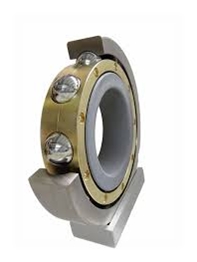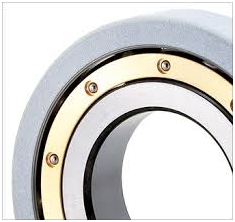Home › Electrical Engineering Forum › General Discussion › Electrically Insulated Bearings – Enhancing The Operational Reliability Of Electrical Machines
- This topic has 1 reply, 2 voices, and was last updated 10 years, 8 months ago by
Anonymous.
-
AuthorPosts
-
2014/06/16 at 12:28 pm #11173
admin
KeymasterA new member of the EEC volunteered for sending few articles for the blog. Check his 1st article and remember that you can also send us all type of articles by mail.
Introduction
It is quite evident that every electrical machine that has revolving, twisting or turning components inside has bearings attached to them to help rotate. Most of these bearings are made of stainless steel and are prone to stray currents. Passing of such electric currents into the bearings may prove to be very expensive, leading to lower performance or complete failure of an electrical machine.
In some cases, the damage caused to the machine due to the failure of the bearings can be so extensive, that it eventually needs a replacement.
Electrical Pitting – How to avoid?
The passage of electric currents into the bearings of an electrical machine is known as “electrical pitting.” This mostly occurs in electrical equipments such as motors, electrical generators, etc.
Bearing failure is occurred when the electrical current present near the bearing on the non-driving side (in most cases) passes into the bearing destroying the outer surface of the rolling contact. In order to avoid such kind of a bearing failure, many OEM’s have started using electrically insulated bearings, in the manufacturing stage itself.
Different types of electrically insulated bearings that are used extensively
There are various types of insulated bearings available in the present market, of these, ceramic and resin insulated bearings have proven to be quite economical and effective. There are other variations available such as ceramic hybrid bearings equipped with rolling elements made of silicon nitride. Such bearings are used where there is a heavy load in operation, and access to service is limited, such as, the wind energy production sector.
As far as the insulation coated bearings are concerned, most of the leading bearing manufacturers, such a SKF, NKE, etc, use plasma technology to make the coating very effective. Some of the bearings manufactured by these companies can resist stray currents of up to 2.5KV; AC or DC.
Importance of insulated bearings for an efficient output
Many leading bearings manufacturers agree to the fact that the stray currents can cause even more damage to the rotating parts, especially, in frequency driven motors. Though there are a number of solutions to avoid bitter damages to the machine, the most important of them all is using best insulated bearings.
Though these kinds of bearings are not used frequently in smaller motors, as they are a bit expensive, one should remember that stray currents may cause damage even in smaller motors with rating as low as 1-2kv. Hence, it is always beneficial to use insulation coated bearing (or ceramic/resin versions), to avoid stray currents, irrespective of the capacity of the motor.
Which end to use?
Insulated bearings are generally used on the non-drive side of the motor, where often present are the smallest bearings. However, one should understand that, though it is not necessary that all the bearings used in the motor should be insulated, it only gets good, if they are.
This way you will be able to tremendously increase the efficiency and the reliability of the motor. Also, it is recommended that you use originally built ceramic/resin insulated bearings (just not the coated ones) on both the sides (drive and non-drive side of the motor) for better operational reliability.
If budget is a factor and you have opted to use an insulation coated bearing, enough care should be taken to see that the coating is not damaged while mounting the bearing on to the machine; this will ensure maximum insulation to protect the bearings from stray currents.
Advantages of electrically insulated bearings
- Protects bearings against any stray currents and ensures maximum operational reliability
- Cost effective, when compared to insulating the housing or the shaft to avoid the stray currents from entering into the bearings.
- Most of them are manufactured with the same dimensions that of the conventional bearings. Hence, these are easily replaceable.
- Better endurance capacity compared to the traditional bearings
- They use less energy compared to the conventional bearings and also perform better even at temperatures as low as 10-20°C
- That have higher RPM’s, in some cases, 50% more than the stainless steel bearings.
Hope you’ve liked that first article, I think I’ll come back with more!
Sanka.
2014/06/26 at 5:14 am #13474Anonymous
GuestPl intimate the additional cost one has to pay in order to have insulated bearings . Pl also inform on an average how many years more these bearings will work in comparison to conventional bearings.
Thanks for writing such a informative article. -
AuthorPosts
- You must be logged in to reply to this topic.

